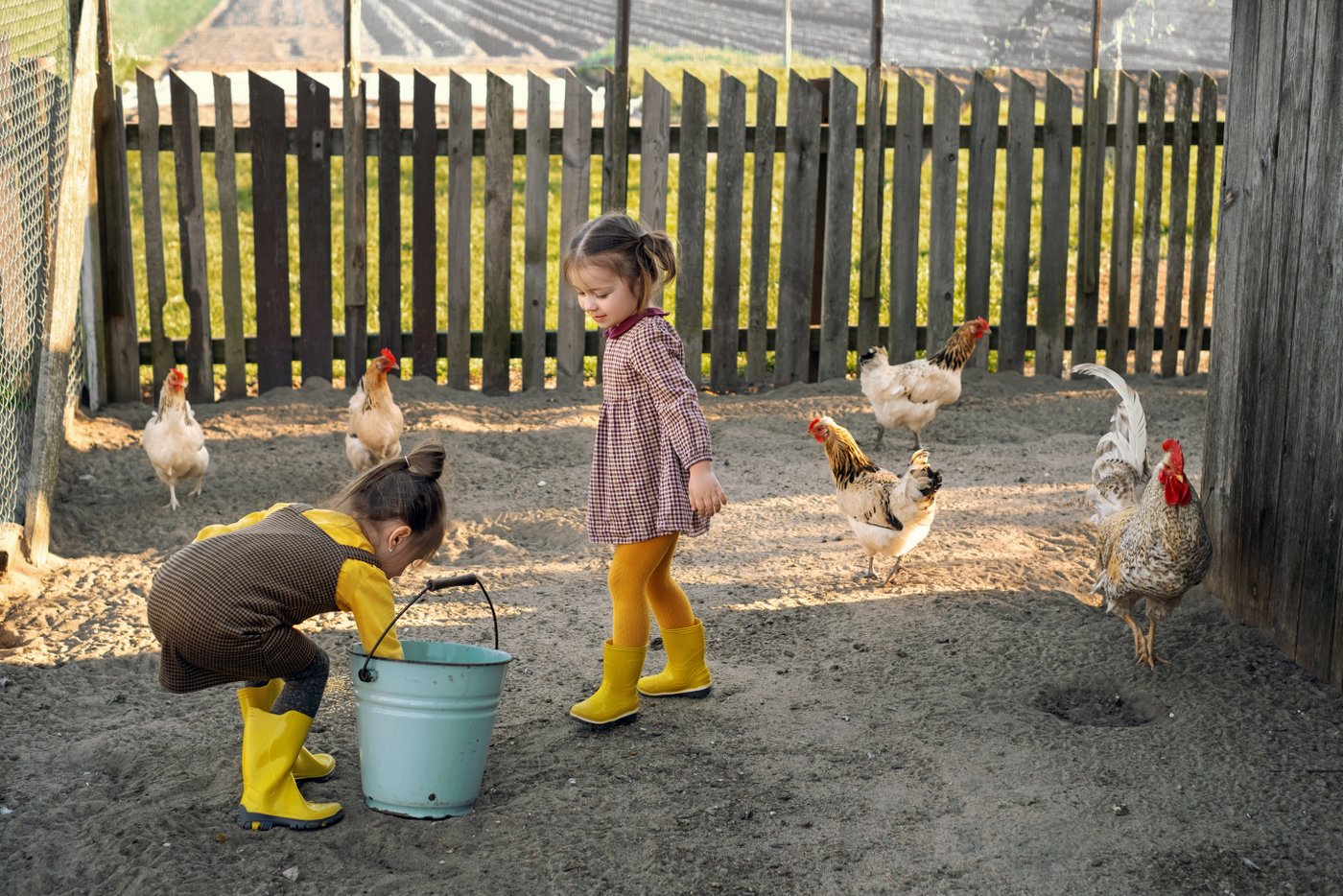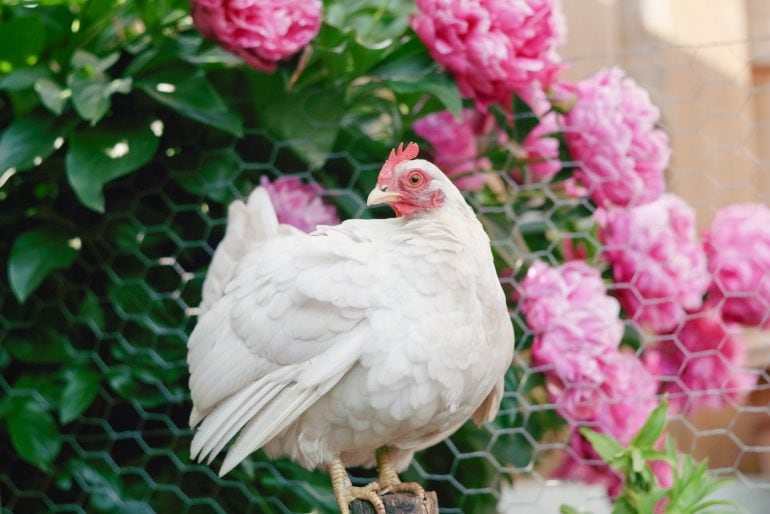Raising backyard chickens: Yes or no?
Whether you live in the city or the suburbs, raising chickens in your own backyard is becoming downright trendy.
The American Pet Product Association’s National Pet Owners Survey for 2021-2022 found that backyard chickens ownership increased five percent in just two years, to reach 13 percent in 2020.
It didn’t take long for the idea of raising backyard poultry to become as fashionable as growing your own herbs and vegetables.
One of the biggest benefits of raising free-range chickens includes having free, fresh, organic eggs. But with every peck of the ground, the fowl also serves as a chemical-free form of pest control for your yard.
And hey — if you’re getting a rooster? You might not even need an alarm clock anymore.

Some more of the benefits of backyard chickens
Coast to coast, people are learning again that there are many benefits that come with backyard chickens. The City of San Diego listed just a few:
- A healthy adult hen generally lays up to 300 eggs a year. Five hens would supply approximately 30 eggs a week which would meet the needs of a typical family of four.
- Backyard eggs contain 25 percent more vitamin E, 33 percent more vitamin A, and 75 percent more beta carotene.
- Home raising reduces the need for transporting eggs from farm/factory to store to home, resulting in a reduction in carbon emissions and packaging materials.
- Chicken manure can be added to compost piles or used directly as a fertilizer when tilled into the soil.
- Many people benefit from knowing that the chickens are raised and fed in humane conditions.
Is it legal to raise backyard chickens on your property?
If you’re not on a farm and are considering raising chickens, the first thing is to check out the laws in your city, town or county to see if you’re even allowed to have livestock in your yard.
Fortunately, this is usually as easy as visiting your local municipal site — many of which are listed here. There may be various ordinances — not just whether or not you can keep chickens, but how many you can have, how many roosters you can keep (if any — the cocks are noisy), how big your yard needs to be, etc.

Important things to consider before you start to raise backyard chickens
Are you ready to keep chickens? Questions to ask yourself
- Do you have time to raise chickens, and to maintain their food and environment daily?
- Will your other pets pose a danger or a problem to the chickens?
- Will young children have contact with the birds? Live poultry may transmit Salmonella germs, even when they appear healthy and clean.
- Do you have enough space to dedicate to keeping a flock safe in your backyard?
- Can you afford to build or buy a chicken coop and/or nesting boxes?
- How will you deal with sanitation and manure management?
- Will your neighbors mind if you keep chickens?
- Since it’s not practical to take chickens to a boarding facility, so do you have a plan for who will chicken-sit for you if you go out of town?
What do you need to know? Seek answers to these questions
- What are the best chicken breeds for your situation?
- How do you handle birds?
- What do chickens eat, how much do they need, and where would you get their food?
- How much space do you need, and where will you get a coop?
- What are the daily care requirements?
- What extra things do you need to do to have good production?
- Where do you buy chicks, and how many chickens should you have?

10 tips for raising backyard chickens
Some people like to keep backyard chickens as a ready source of eggs and meat, others for help in pest control, and people like to have the birds around just because they are fun to watch.
Whatever the reason, chickens can be a great resource if properly managed and given appropriate care. Consider these tips from David D Frame, Utah State University Cooperative Extension Poultry Specialist.
1) Chicks have special needs
Be aware of basic brooding needs in the first three to four weeks of a chick’s life. These include clean water, quality chick starter feed, clean litter (pine or cedar shavings are recommended) and a circular confined area to keep the chicks from wandering from the heat source.
2) Offer enough space
Provide a building large enough for proper air circulation, but small enough to keep chicks from getting too cold in winter. Plan to have 1-1/2 to 2 feet of floor space per adult chicken. Housing should provide easy access to feed and water and provide nesting areas for hens in egg production.
3) Give her a perch
Although not mandatory, it is a good idea to provide perches. These allow birds to stay off the floor, particularly as they roost at night.
Manure tends to accumulate in greatest concentration under the roost area, keeping the rest of the bedding material cleaner. Allow six to 10 inches of linear perch space for each chicken housed.
4) Give laying hens nest boxes
Provide nest boxes as furnishings for a hen house so she has a secluded place to lay eggs. Commercial or homemade boxes both work.
Box height and width should be 12 to 15 inches by at least 12 inches deep. One nest box is required for each four to five hens. Place nest boxes no less than 18 inches above the floor. Add at least two to three inches of clean, dry shavings to reduce egg breakage and minimize the number of soiled eggs.
5) Be aware of water needs
If inadequate water is available, not only will eating decrease, but so will egg production and growth. Fountain-type drinkers are affordable and easily moved around. Watch carefully so they don’t become empty.
Water should be changed frequently in order to prevent bacterial growth, over-warming in summer or freezing in winter. Provide at least two or three additional drinkers as a buffer against spillage or leakage.

6) Keep the food healthy
Ensure that feed is not stale, rancid or moldy. This can cause disease or nutritional deficiencies if consumed.
Purchase feed that is fresh. Vitamins will start to degrade if feed is stored for prolonged periods.
Plan to purchase new feed at least every two months. Always store feed away from heat, moisture and direct sunlight and protect it from rodents.
7) Choose the right feeder systems
Be aware that feeders come in a wide array of sizes and designs. Trough feeders are usually used for young chicks, and bucket feeders of various sizes for growing and adult chickens.
Feeders should be raised off the ground and positioned level with the mid-to-upper breast region of the chickens. Keep feeders in an area protected from moisture, wild animals and free-flying birds.
Chickens can forage for bugs and greens, but always provide them access to the appropriate type of formulated balanced feed.
8) Roosters are not always required
Note that hens do not need roosters present to produce eggs. Increasing day length, not the presence of males, stimulates egg production.
A rule of thumb is that four to five hens will supply two to four eggs per day during their production cycle. Pullets (young females) reach sexual maturity and are capable of laying eggs when about five to seven months of age; however, this can vary depending on the breed and strain.
9) Know molting changes
Be aware that during the molt, hens go out of egg production and lose feathers. Under natural conditions, this occurs in the fall or winter. However, modern layer strains have been bred to maintain high egg production over a long period, therefore, you may find your flock laying eggs and losing feathers at the same time.
The laying cycle causes the feathers to become worn and broken. After the molt, hens have a new covering of feathers. They generally produce fewer eggs with each molt. Eggshell strength may also be reduced with each subsequent molt.

10) Be a good neighbor
Keep your chickens enclosed and confined to your property. Properly dispose of used poultry litter.
Although chickens pose a relatively low risk of giving disease to humans, there are a few infections that can be transmitted back and forth. Proper care and handling of eggs and processing of poultry carcasses are critical to avoid problems.
Small backyard flocks, if not properly managed, could significantly increase the probability of disease exposure to the commercial industry.








